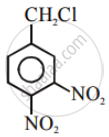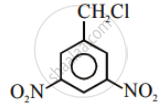Advertisements
Advertisements
प्रश्न
Racemisation occurs in ______.
विकल्प
SN1 reaction
SN2 reaction
Neither SN1 nor SN2 reaction
SN2 reaction as well as SN1 reaction
उत्तर
Racemisation occurs in SN1 reaction.
Explanation:
A mixture containing two enantiomers in equal quantities will have zero optical rotation because the rotation caused by one isomer will be neutralised by the rotation caused by the other isomer. This type of mixture is known as a racemic mixture or racemic modification. Racemisation refers to the process of converting an enantiomer into a racemic mixture. Both retented and inverted products are generated during the SN1 reaction. Racemization happens as a result of the production of both d- and l- products.
APPEARS IN
संबंधित प्रश्न
Discuss the mechanism of alkaline hydrolysis of bromomethane.
Write the structures of A, B and C in the following:

What are ambident nucleophiles? Explain with an example.
Write the structure of the major organic product in the following reaction:
\[\ce{CH3CH2CH2OH + SOCl2 ->}\]
The stability order for carbocation is _______.
(A) 2° > 3° > 1°
(B) 3° > 2° > 1°
(C) 3° > 1° > 2°
(D) 1° > 3° > 2°
In a coordination entity of the type [PtCl2(en)2]2+ which isomer will show optical isomerism?
The order of reactivity of the given haloalkanes towards nucleophile is:
Racemic compound has ____________.
The decreasing order of reactivity of the following compounds towards nucleophilic substitution (SN2) is ______.
Give the mechanism of the following reaction:
\[\ce{CH3CH2OH ->[H2SO4][413 K] CH3CH2-O-CH2CH3 + H2O}\]




